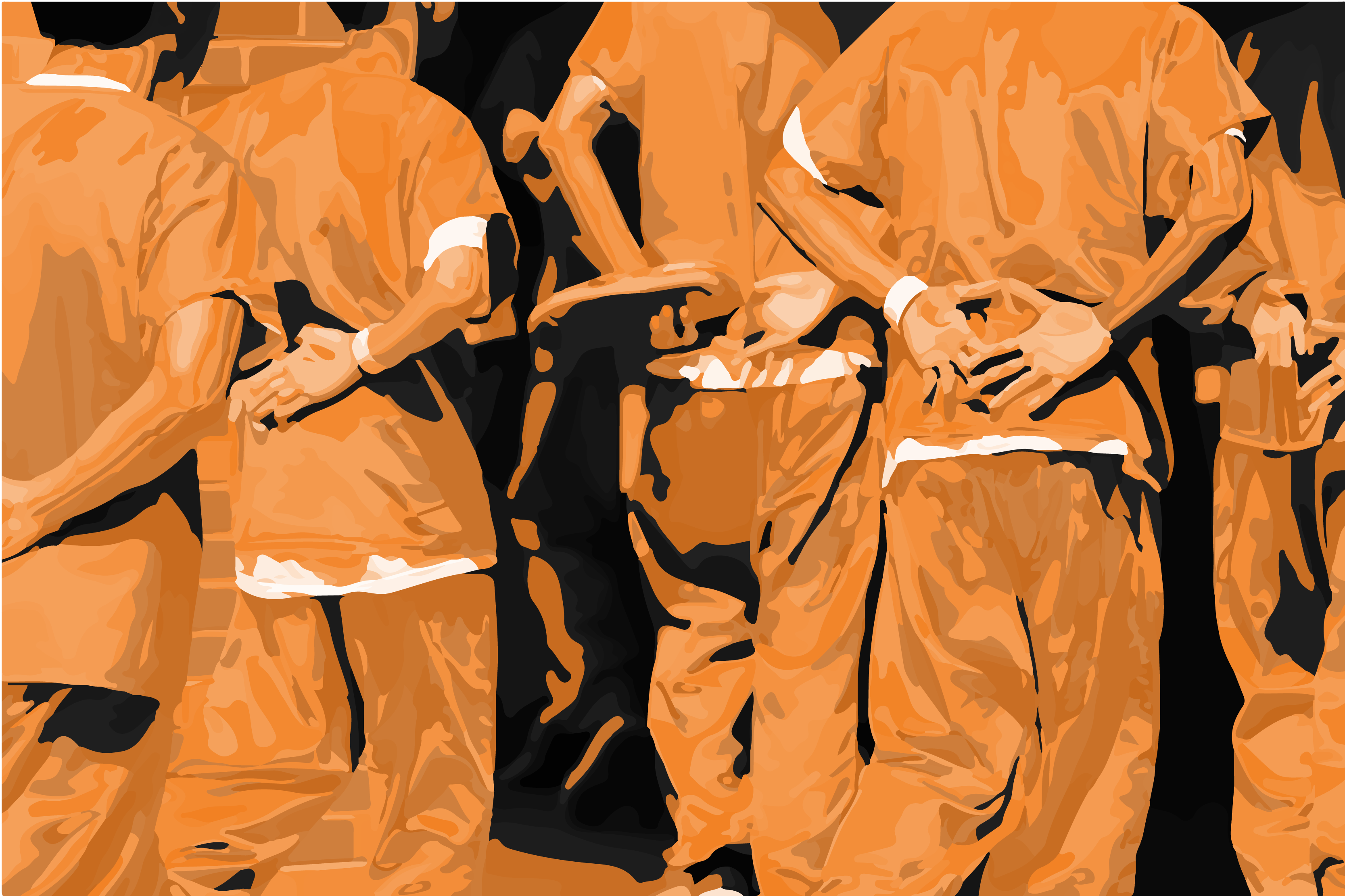 Solitary confinement is defined as the isolation of an incarcerated person for 22 to 24 hours per day; often the only interactions a prisoner can expect during solitary are brief encounters with prison guards. Evidence found in the International Journal of Offender Therapy & Comparative Criminology points to the historical Quakers as being the originators of solitary confinement, and it was initially intended to be used as a way to make prisoners take a few days to reflect on their wrongdoings. It wasn’t long, however, before solitary confinement instead came to be used in prisons as a form of punishment, sometimes lasting for weeks, months, and in some cases, even years. The first research into the effects of solitary confinement dates back to the 1830s, after the practice had been introduced to the Eastern State Penitentiary in Philadelphia. Many visitors reported seeing a high rate of mental breakdown among prisoners in solitary, one of the most famous being Charles Dickens, who toured the facility while visiting the United States. Dickens described solitary confinement as a “slow and daily tampering with the mysteries of the brain,” that was “immeasurably worse than any torture of the body.”
Solitary confinement is defined as the isolation of an incarcerated person for 22 to 24 hours per day; often the only interactions a prisoner can expect during solitary are brief encounters with prison guards. Evidence found in the International Journal of Offender Therapy & Comparative Criminology points to the historical Quakers as being the originators of solitary confinement, and it was initially intended to be used as a way to make prisoners take a few days to reflect on their wrongdoings. It wasn’t long, however, before solitary confinement instead came to be used in prisons as a form of punishment, sometimes lasting for weeks, months, and in some cases, even years. The first research into the effects of solitary confinement dates back to the 1830s, after the practice had been introduced to the Eastern State Penitentiary in Philadelphia. Many visitors reported seeing a high rate of mental breakdown among prisoners in solitary, one of the most famous being Charles Dickens, who toured the facility while visiting the United States. Dickens described solitary confinement as a “slow and daily tampering with the mysteries of the brain,” that was “immeasurably worse than any torture of the body.”


 Our society finds itself asking why do we sentence, probate and incarcerate so many young people while forgetting the frailties of adolescents? Juvenile justice reform is occurring in many states. Often judges are the leaders or at the center of these efforts. Why are judges taking on this new role, and why are communities looking to them for leadership? It is always helpful to look back to see how we got here. We can then better answer those questions.
Our society finds itself asking why do we sentence, probate and incarcerate so many young people while forgetting the frailties of adolescents? Juvenile justice reform is occurring in many states. Often judges are the leaders or at the center of these efforts. Why are judges taking on this new role, and why are communities looking to them for leadership? It is always helpful to look back to see how we got here. We can then better answer those questions.
 Life is often full of obstacles that make growing up a difficult road to navigate for at-risk youth. From poverty and physical abuse to drug and alcohol use, teens frequently run into
Life is often full of obstacles that make growing up a difficult road to navigate for at-risk youth. From poverty and physical abuse to drug and alcohol use, teens frequently run into  Originally created with the intention of aiding adults in quitting traditional cigarettes, e-cigarettes have been finding their way into the hands of teenagers in recent years with an ever-increasing frequency. In 2011, less than five percent of teenagers reported using e-cigarettes; by 2018, that number had jumped to more than 37 percent. Despite being touted as a “safe” and even “healthy” alternative to traditional tar-and-chemical-laden cigarettes, most e-cigarettes still contain nicotine, which has long been known as an addictive substance. And that’s at the heart of the issue of teen e-cigarette use, says Nora D. Volkow, the director of the National Institute on Drug Abuse, “It is urgent that teens understand the possible effects of vaping on overall health, the development of the teen brain and the potential for addiction.”
Originally created with the intention of aiding adults in quitting traditional cigarettes, e-cigarettes have been finding their way into the hands of teenagers in recent years with an ever-increasing frequency. In 2011, less than five percent of teenagers reported using e-cigarettes; by 2018, that number had jumped to more than 37 percent. Despite being touted as a “safe” and even “healthy” alternative to traditional tar-and-chemical-laden cigarettes, most e-cigarettes still contain nicotine, which has long been known as an addictive substance. And that’s at the heart of the issue of teen e-cigarette use, says Nora D. Volkow, the director of the National Institute on Drug Abuse, “It is urgent that teens understand the possible effects of vaping on overall health, the development of the teen brain and the potential for addiction.”
 Solitary confinement is defined as the isolation of an incarcerated person for 22 to 24 hours per day; often the only interactions a prisoner can expect during solitary are brief encounters with prison guards. Evidence found in the International Journal of Offender Therapy & Comparative Criminology points to the historical Quakers as being the originators of solitary confinement, and it was initially intended to be used as a way to make prisoners take a few days to reflect on their wrongdoings. It wasn’t long, however, before solitary confinement instead came to be used in prisons as a form of punishment, sometimes lasting for weeks, months, and in some cases, even years. The first research into the effects of solitary confinement dates back to the 1830s, after the practice had been introduced to the Eastern State Penitentiary in Philadelphia. Many visitors reported seeing a high rate of mental breakdown among prisoners in solitary, one of the most famous being Charles Dickens, who toured the facility while visiting the United States. Dickens described solitary confinement as a “slow and daily tampering with the mysteries of the brain,” that was “immeasurably worse than any torture of the body.”
Solitary confinement is defined as the isolation of an incarcerated person for 22 to 24 hours per day; often the only interactions a prisoner can expect during solitary are brief encounters with prison guards. Evidence found in the International Journal of Offender Therapy & Comparative Criminology points to the historical Quakers as being the originators of solitary confinement, and it was initially intended to be used as a way to make prisoners take a few days to reflect on their wrongdoings. It wasn’t long, however, before solitary confinement instead came to be used in prisons as a form of punishment, sometimes lasting for weeks, months, and in some cases, even years. The first research into the effects of solitary confinement dates back to the 1830s, after the practice had been introduced to the Eastern State Penitentiary in Philadelphia. Many visitors reported seeing a high rate of mental breakdown among prisoners in solitary, one of the most famous being Charles Dickens, who toured the facility while visiting the United States. Dickens described solitary confinement as a “slow and daily tampering with the mysteries of the brain,” that was “immeasurably worse than any torture of the body.” Growing up is a difficult process for many teens across the U.S., as developing a positive self-image can be a daunting task in the face of society's ever-changing landscape. Teens feel pressure from different areas of their lives: from one's parents, friends, school, job, and even from interactions on social media. It is no wonder, then, that a lot of teens suffer from mental health issues like depression and anxiety. But when teenagers are struggling with a mental health problem and have no healthy outlet to deal with painful or difficult emotions, they can instead end up turning to alcohol or drug use as a form of self-medication. It is a scenario many are familiar with in adults, but with teenagers the risks are much higher because their brains are still developing. At this critical point in their development, drug and alcohol use can be far more problematic.
Growing up is a difficult process for many teens across the U.S., as developing a positive self-image can be a daunting task in the face of society's ever-changing landscape. Teens feel pressure from different areas of their lives: from one's parents, friends, school, job, and even from interactions on social media. It is no wonder, then, that a lot of teens suffer from mental health issues like depression and anxiety. But when teenagers are struggling with a mental health problem and have no healthy outlet to deal with painful or difficult emotions, they can instead end up turning to alcohol or drug use as a form of self-medication. It is a scenario many are familiar with in adults, but with teenagers the risks are much higher because their brains are still developing. At this critical point in their development, drug and alcohol use can be far more problematic. One of the most important parts of the child welfare system is the professionals who work in it, dedicating their lives to ensuring the well-being of the children within their communities. Child welfare investigators are social workers who are responsible for protecting children from situations of abuse, neglect, and other forms of mistreatment, by assessing their social, physical, psychological and emotional well-being. Investigators do this by completing a number of different tasks: they make home visits in order to explore allegations of abuse or neglect; they provide assessments of home conditions to determine whether a parent or guardian is providing adequate care; they evaluate whether a child should be removed from their living situation; and they place removed children in either temporary foster care or permanent adoptive families.
One of the most important parts of the child welfare system is the professionals who work in it, dedicating their lives to ensuring the well-being of the children within their communities. Child welfare investigators are social workers who are responsible for protecting children from situations of abuse, neglect, and other forms of mistreatment, by assessing their social, physical, psychological and emotional well-being. Investigators do this by completing a number of different tasks: they make home visits in order to explore allegations of abuse or neglect; they provide assessments of home conditions to determine whether a parent or guardian is providing adequate care; they evaluate whether a child should be removed from their living situation; and they place removed children in either temporary foster care or permanent adoptive families.